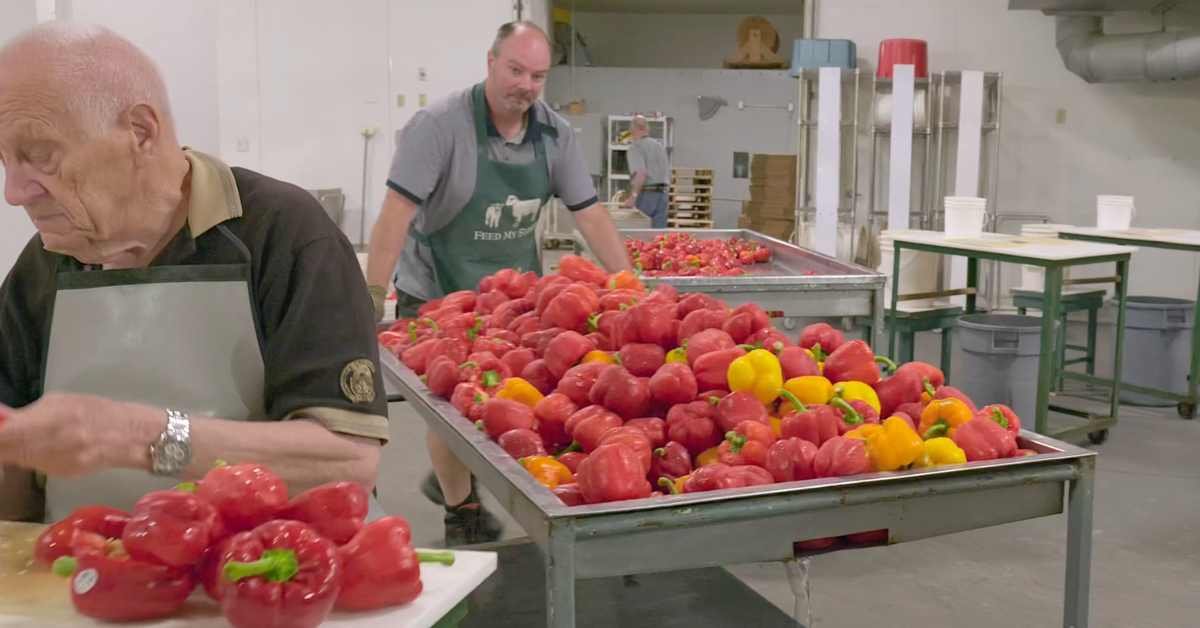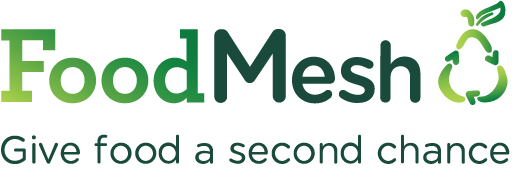
16 May Spotlight on: Fraser Valley Gleaners
In support of the Fraser Valley Regional District Food Recovery Network, this spotlight shines a light on local organizations that are finding innovative ways to upcycle surplus food in the Fraser Valley – turning food that would have previously been discarded into a whole new product, and creating new value in the process.
Here, we chat to General Manager, Joel Pasma, to share the story of work the brilliant Fraser Valley Gleaners is doing to repurpose produce intended for waste streams.
What is Fraser Valley Gleaners’ mission?
The mission at Fraser Valley Gleaners is to work with volunteers, collecting fresh and frozen food, processing this into dried food and making it available to established organizations for worldwide distribution.
What is your process for upcycling surplus food?
Volunteers come each day to process surplus vegetables, removing what is bad, and saving what is good. The good vegetables are then diced by an industrial dicer, spread onto baking sheets and placed into large dehydrators for 9 – 10 hours until 90% of the water is removed. The dried vegetables are then stored in barrels until needed. The soup packing line will then package all of our dried vegetables, along with pulses such as split peas, beans, and lentils, into a 15-cup bag of dried soup. These bags are then boxed, palletized, and shipped overseas by our distribution partners.

Where are you sourcing the ingredients you are upcycling?
Most of our produce comes directly from farmers in the Lower Mainland of BC. Some of our produce also comes from Washington, Alberta, and Saskatchewan.

What are some of the benefits of your product?
We package a complete dried soup mix that has both vegetables and protein, with no additional spices. This way our soup mix can be used in many different cultures, all around the world, as each region will spice their soup in different ways. Our soup is used to feed starving and impoverished children all around the world, in orphanages, school lunch programs, and through distribution to families in need.
What inspired the founding of Fraser Valley Gleaners?
A group of farmers in the Okanagan Valley who saw just how much produce is unmarketable, got together 28 years ago, and founded the Okanagan Gleaners in Oliver BC. Once they proved the success of the Okanagan Gleaners, they looked to the abundance in the Fraser Valley and inspired local farmers here to start up a new Gleaners.

How much food have you rescued to date?
I would estimate that we’ve rescued about 17 million kg in 23 years of operation. We currently rescue around 950,000 kg a year.
What can you share about the environmental, social and/or economic impact of your work to date?
The vegetables that we process would otherwise be destined for compost or the landfill. The work that is done here at the Fraser Valley Gleaners is accomplished largely by retired seniors. By providing meaningful volunteering opportunities, these seniors are able to find a rewarding purpose in retirement. Our volunteers have also developed a close-knit community. The Gleaners is able to donate our soup, free of cost to non-profit development agencies, enabling them to use their donor funds in the distribution and other humanitarian aid activities and crisis response.

What has your experience been dealing with rescued food?
It never ceases to amaze me just how much produce is available in the Lower Mainland that would otherwise go to waste. The most difficult part in rescuing the produce is making the right connections at a farm or wholesaler.
What do you think makes Fraser Valley Gleaners unique?
Fraser Valley Gleaners is one of only a handful of non-profits in Canada that are using volunteers to take surplus produce and make a dehydrated soup for humanitarian aid. There are ten Gleaners across Canada now that collectively produce over 80 million soup servings each year to send as humanitarian aid.

What would you consider Fraser Valley Gleaners’s biggest success to date?
We just packaged our quarter billionth soup serving in April of 2024, after 23 years of operation.
What are some of the biggest challenges Fraser Valley Gleaners has faced to date?
Our biggest challenge right now is having the space to accommodate all the volunteers who want to serve each day. The Gleaners facility is located in the Agricultural Land Reserve, and we are in the early steps of submitting an application to the ALC for permits for an expansion.

Where can someone looking to buy your product find them?
Our product is unavailable for sale. It is strictly donated to our aid partners for distribution overseas to countries that have desperate need for food aid.
What has been the public response to your products?
Covid exasperated poverty around the world, setting back the progress made against world hunger by at least a decade. As well there are climate-related crises occurring daily. The need for food aid is great. Food aid helps meet immediate needs in areas of crisis while our partner organizations work toward long-term solutions. Our food aid is nutrition-packed, has a long shelf life and is safe for transport. For this reason, our products are in great need and gratefully received.

Have you noticed a change in attitude towards upcycled food since Fraser Valley Gleaners first started?
There seems to be a growing awareness in recent years in the general public of just how much food is wasted each year in Canada.
What advice would you share with someone looking to start their own food upcycling venture?
Have a clear vision of your purpose and a core group of people committed to the work.
Watch the Fraser Valley Gleaners in action
Join the Fraser Valley Regional District Food Recovery Network
Be part of a growing community of organizations that are coming together to help ensure that no food unnecessarily goes to waste.
Prepared by Megan Czerpak, Head of Communications at FoodMesh


